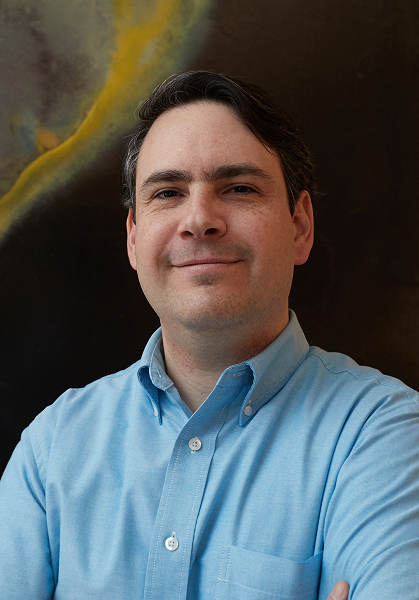An investigation done by scientists at the University of Oklahoma that were just published in Science Advances establishes the validity of the idea that information could be securely encoded and transmitted utilizing spatial correlations in quantum-entangled light beams.

Alberto Marino, Ph.D. Image Credit: University of Oklahoma
Light can be used to encrypt data for transmission at high data rates, great distances, and other purposes. To preserve the privacy and integrity of the data being conveyed, however, encoding vast volumes of information in light presents extra difficulties for secure communication.
The study’s first author, OU doctoral student Gaurav Nirala, and co-authors Siva T. Pradyumna and Ashok Kumar worked with Alberto Marino, the Ted S. Webb Presidential Professor in the Homer L. Dodge College of Arts, to conduct the research.
Additionally, Marino maintains positions with the Quantum Science Center at Oak Ridge National Laboratory and the Center for Quantum Research and Technology at the University of Oklahoma.
The idea behind the project is to be able to use the spatial properties of the light to encode large amounts of information, just like how an image contains information. However, to be able to do so in a way that is compatible with quantum networks for secure information transfer. When you consider an image, it can be constructed by combining basic spatial patterns know as modes, and depending on how you combine these modes, you can change the image or encoded information.
Alberto Marino, Ted S. Webb Presidential Professor, Homer L. Dodge College of Arts
He added, “What we are doing here that is new and different is that we are not just using those modes to encode information; we are using the correlations between them. We are using the additional information on how those modes are linked to encode the information.”
The researchers used two entangled beams of light, meaning that the light waves are interconnected with correlations that are stronger than those that can be achieved with classical light and remain interconnected despite their distance apart.
“The advantage of the approach we introduce is that you are not able to recover the encoded information unless you perform joint measurements of the two entangled beams. This has applications such as secure communication, given that if you were to measure each beam by itself, you would not be able to extract any information. You have to obtain the shared information between both of the beams and combine it in the right way to extract the encoded information,” Marino added.
The researchers showed the effects of correctly encoding information in these quantum-entangled light beams through a series of images and correlation studies. The information only resolved into recognized information stored in the form of images when the two beams were joined as anticipated.
The experimental result describes how one can transfer spatial patterns from one optical field to two new optical fields generated using a quantum mechanical process called four-wave mixing. The encoded spatial pattern can be retrieved solely by joint measurements of generated fields. One interesting aspect of this experiment is that it offers a novel method of encoding information in light by modifying the correlation between various spatial modes without impacting time-correlations.
Gaurav Nirala, Study First Author and Postdoctoral Student, University of Oklahoma
Marino concluded, “What this could enable, in principle, is the ability to securely encode and transmit a lot of information using the spatial properties of the light, just like how an image contains a lot more information than just turning the light on and off. Using the spatial correlations is a new approach to encode information.”
Journal Reference
Nirala, G., et al. (2023) Information encoding in the spatial correlations of entangled twin beams. Materials Chemistry Frontiers. doi:10.1126/sciadv.adf9161.